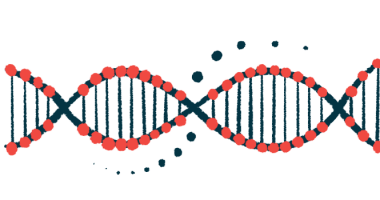New Treatments Needed to Improve Quality of Life in AADC

Aromatic l-amino acid decarboxylase (AADC) deficiency has a significant negative effect on patients, their families, and the healthcare system, according to a new review paper that called it “a debilitating disease that significantly impacts quality of life for individuals and caregivers.”
The review found that people with AADC deficiency overall have “very limited function” regardless of whether or not they could walk.
“As highlighted by this analysis, all patients, regardless of [AADC] severity, require significant care and resource consumption, and their disease causes a substantial HRQoL [health-related quality of life] and economic burden to their caregivers,” the researchers wrote.
New treatments are needed to ease this burden, the team said, noting that “future therapies with the potential to lessen [disease] severity could considerably impact affected individuals’ HRQoL and that of their caregivers.”
The study, “Burden and severity of disease of aromatic L-amino acid decarboxylase deficiency: a systematic literature review,” was published in Current Medical Research and Opinion.
Scientists at PTC Therapeutics, which is developing a gene therapy called PTC-AADC for AADC deficiency patients, had sought a better understanding of how the disease manifests. That led them to conduct a review, funded by PTC, of the scientific literature available to date.
“It is the objective of this systematic literature review to produce an up-to-date review of evidence and to classify the clinical manifestations of AADC [deficiency] by disease severity as the data allow. In addition, this systematic literature review aims to gain a clearer understanding of the impact of the disease on quality of life for individuals, their caregivers, and the utilization of resources within healthcare systems,” the researchers wrote.
The review included 59 studies, the vast majority (48) of which described signs and symptoms of AADC deficiency. Two studies reported how the disease impacted patients, four assessed its effects on caregivers, and five reported on how AADC deficiency affected healthcare systems.
Clinical manifestation of AADC deficiency varied markedly from person to person, and could include motor problems, trouble with cognition and mood, sleep problems, and eye problems. Other common symptoms were digestive issues — for example, diarrhea or constipation — and autonomic dysfunction, meaning problems with involuntary bodily processes like excessive sweating.
Most of the patients included across the studies could not walk. The researchers found that disease symptoms tended to be less severe in those patients who were able to walk, but noted that “the disease is severe regardless of ambulatory status.”
The studies generally reported that AADC deficiency had a severe impact on patients’ life quality, with most individuals entirely dependent on their caregivers for many aspects of day-to-day living.
“This dependency leads to the inability to socialise with peers which was reported, in particular, to severely affect individuals’ emotional wellbeing,” the researchers wrote.
The impact of the disease on caregivers also was substantial, ranging from emotional fatigue, physical exhaustion, financial strain, and impaired ability to socialize and engage in leisure activities.
In fact, one study found that a standardized questionnaire called the EQ-5D, which is widely used to measure quality of life in adults, might not be appropriate for assessing life quality in AADC deficiency caregivers, especially with regard to daily activities. These “caregivers’ perceptions of these [activities] are so far removed from that of the general population,” the researchers wrote.
The impact of AADC deficiency on healthcare systems also was considerable, with high rates of hospitalizations and the need for medical devices or professional support. There also was the cost of medicines and therapies.
AADC deficiency “is a rare and severe genetic disorder that is well documented to cause a broad spectrum of clinical signs and symptoms that seriously impact the daily lives of affected individuals and requires multidisciplinary care,” the researchers wrote.
The lack of potential therapies — “only symptomatic treatment is available,” the team noted – compounds these issues, though the researchers highlighted that new therapies are emerging. Among these treatments is PTC’s own gene therapy, which is under review in the European Union.







